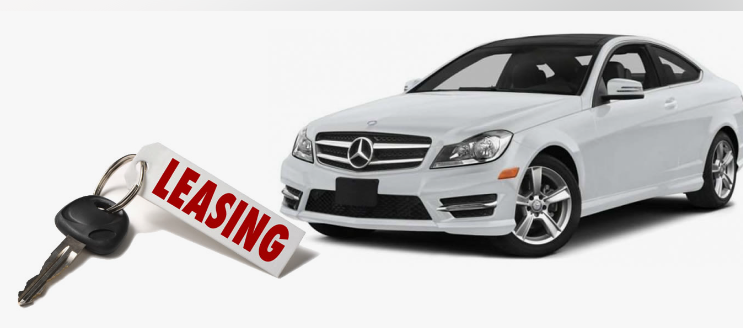Car leasing can be a great alternative to buying, allowing drivers to enjoy new vehicles without the long-term financial commitment. However, leasing comes with its own terminology and set of conditions that can seem overwhelming at first. This guide will walk you through the essential terms and details of car leasing, helping you make an informed decision. Whether you’re looking to lease your first car or transition from leasing to selling, these insights will help simplify the process.
What is Car Leasing?
Car leasing is essentially a long-term rental agreement, allowing you to use a vehicle for a specific period, typically between two to four years. At the end of the lease, you have several options, such as returning the vehicle, purchasing it outright, or sometimes renewing the lease. Leasing is popular because it enables people to drive newer models with lower monthly payments than typical car loans. However, before leasing, it’s helpful to understand some basic terms to avoid any surprises and know the pros and cons to determine if leasing aligns with your goals.
Key Terms in Car Leasing
Car leasing terms can be confusing, especially for beginners. Here’s a breakdown of the essential terms you’ll encounter:
Capitalized Cost
The capitalized cost, or “cap cost,” is the price of the car agreed upon at the beginning of the lease. This figure influences your monthly lease payments. Often, the cap cost is negotiable, allowing you to lower your payments by reducing the initial cap cost. This is one of the first numbers you should consider when starting a lease agreement.
Residual Value
Residual value is the estimated value of the vehicle at the end of the lease. This number affects your monthly payments, as higher residual values typically mean lower monthly payments. At the end of the lease, you may have the option to buy the car for its residual value. Knowing this term can be helpful if you’re considering buying the car when the lease ends.
Lease Term
The lease term is simply the length of time you’ll be leasing the car. Most leases range from two to four years. A longer lease term may reduce your monthly payments, but it’s essential to understand that a longer term might also mean higher repair costs as the vehicle ages.
Money Factor
The money factor is similar to an interest rate in a car loan and represents the cost of financing the lease. To understand the interest rate, multiply the money factor by 2,400. The lower the money factor, the less you’ll pay in interest. This rate is often determined by your credit score, so maintaining good credit can help you secure a lower money factor.
Cash for Cars South Brisbane
If you’re thinking about how to transition from leasing to owning or need to sell a car you no longer want, services like cash for cars in South Brisbane are available to help make the process easy. These services can also aid you in understanding vehicle valuations, especially when assessing your leased car’s value at the end of the term.
Understanding Lease Payments
Leasing payments can vary based on multiple factors. Here’s how lease payments are typically calculated and what they consist of:
Depreciation
Depreciation is the loss in value of the car over time. Since leasing is paying for the vehicle’s depreciation, understanding this factor is crucial. Cars with lower depreciation rates generally have lower monthly lease payments.
Fees and Taxes
In addition to your monthly payment, leasing often includes additional costs such as taxes, registration, and title fees. Before signing a lease, ask about any hidden fees to avoid unexpected charges. Additionally, some leases may charge acquisition fees, covering the administrative cost of setting up the lease, and disposition fees, which are often charged when you return the car.
Insurance Costs
Lease agreements often require specific insurance coverage, typically a bit more than you might carry on a purchased car. It’s wise to check the required insurance level to determine if it fits your budget. Leasing a car may also require a higher deductible, impacting your monthly insurance expenses.
Common Lease Restrictions
A lease agreement can have several restrictions, so understanding these limitations is crucial.
Mileage Limits
One of the most critical restrictions in leasing is the mileage limit. Most leases have a mileage cap, typically ranging from 10,000 to 15,000 miles per year. Exceeding this limit can result in additional charges per mile, so if you have a high annual mileage, it’s essential to discuss options that suit your driving habits.
Wear and Tear
Normal wear and tear are expected on leased vehicles, but excessive wear can lead to additional charges when you return the car. Understanding what qualifies as “excessive” will help you take the necessary precautions. For example, minor scratches may be acceptable, but significant dents and damage to the interior could incur fines.
Early Termination Fees
If you decide to terminate your lease early, there can be significant fees involved. These fees are meant to cover the lessor’s loss for the remainder of the lease. It’s important to understand these costs before leasing, especially if there’s a chance you might need to end the lease early.
Cash for Cars Services
For those looking to switch cars or end their lease, options like top cash for cars Sunshine Coast provide a practical solution by purchasing your car quickly, allowing for a smooth transition. Whether you’re in a lease or looking to sell your vehicle outright, such services offer a seamless and time-efficient experience.
End-of-Lease Options
When your lease term is about to end, you have several options. Knowing these in advance can help you decide on the best course of action:
Returning the Vehicle
Most people return the car at the end of the lease. Before doing so, you’ll need to ensure that any wear and tear fall within acceptable limits and that you haven’t exceeded your mileage cap to avoid additional fees.
Purchasing the Vehicle
You may also buy the vehicle at the end of your lease by paying its residual value. This option is attractive if you’ve enjoyed driving the car or find that the residual value is lower than the market value.
Selling the Car with Cash for Cars South Brisbane
Another option is to leverage cash for cars south brisbane services to sell the vehicle. This is beneficial if you prefer a straightforward, cash-based transaction without the hassle of traditional sales processes.
Pros and Cons of Leasing a Car
Leasing comes with advantages and drawbacks, so it’s essential to weigh them before deciding.
Pros
Lower Monthly Payments – Leasing usually involves lower monthly payments compared to purchasing.
Access to Newer Models – Leasing allows you to drive the latest models with updated features.
Warranty Coverage – Most leases are under warranty for the entire term, covering maintenance costs.
Cons
Mileage Restrictions – Mileage caps can be limiting for drivers with high annual mileage.
No Ownership – At the end of the lease, you don’t own the vehicle.
Potential Fees – Fees for wear and tear, mileage, and early termination can add up.
Final Considerations Before Leasing
Before signing a lease agreement, there are a few last steps to ensure you’re making a well-informed decision:
Review Your Budget:
Assess your monthly expenses to confirm that leasing aligns with your financial situation.
Read the Fine Print:
Review all terms in the lease agreement, from mileage limits to end-of-lease options.
Consider Your Lifestyle:
Determine if your driving habits are compatible with the restrictions of leasing.
Conclusion: Is Leasing Right for You?
Car leasing can be a fantastic way to drive a new vehicle while managing costs. By understanding the terms and restrictions of leasing, you can make an informed choice about whether it fits your lifestyle and budget. Plus, if you ever need to change your vehicle, options like cash for cars south brisbane provide an easy path to transition without hassle.




